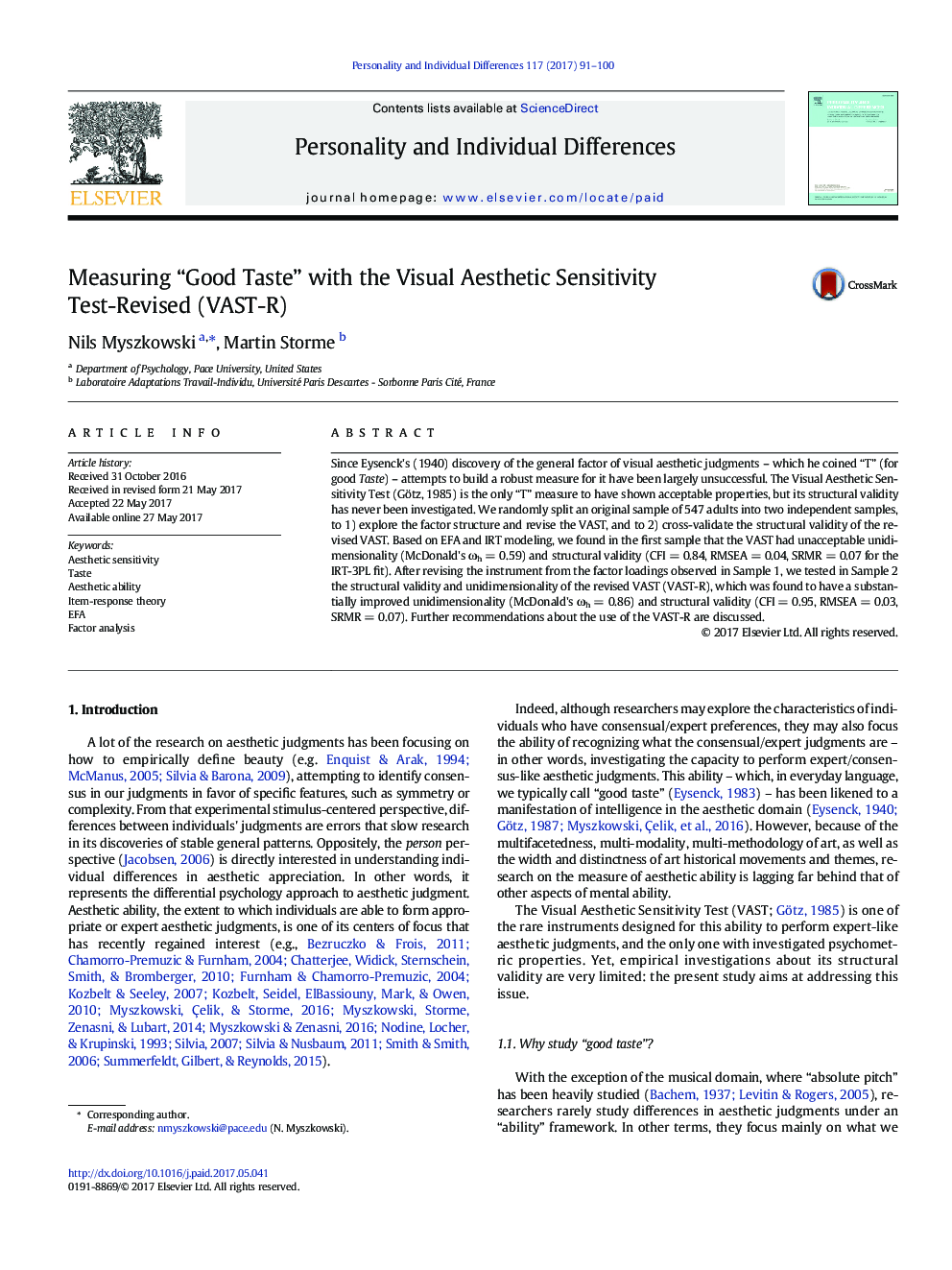| Article ID | Journal | Published Year | Pages | File Type |
|---|---|---|---|---|
| 5035981 | Personality and Individual Differences | 2017 | 10 Pages |
â¢547 adults responded the Visual Aesthetic Sensitivity Test (VAST).â¢The sample is split into two equivalent samples for cross-validation.â¢In sample 1, the VAST is shown to have inappropriate construct validity.â¢A revised VAST (VAST-R) is constructed from EFA loadings observed in sample 1.â¢In sample 2, the VAST-R is shown to be structurally valid.
Since Eysenck's (1940) discovery of the general factor of visual aesthetic judgments - which he coined “T” (for good Taste) - attempts to build a robust measure for it have been largely unsuccessful. The Visual Aesthetic Sensitivity Test (Götz, 1985) is the only “T” measure to have shown acceptable properties, but its structural validity has never been investigated. We randomly split an original sample of 547 adults into two independent samples, to 1) explore the factor structure and revise the VAST, and to 2) cross-validate the structural validity of the revised VAST. Based on EFA and IRT modeling, we found in the first sample that the VAST had unacceptable unidimensionality (McDonald's Ïh = 0.59) and structural validity (CFI = 0.84, RMSEA = 0.04, SRMR = 0.07 for the IRT-3PL fit). After revising the instrument from the factor loadings observed in Sample 1, we tested in Sample 2 the structural validity and unidimensionality of the revised VAST (VAST-R), which was found to have a substantially improved unidimensionality (McDonald's Ïh = 0.86) and structural validity (CFI = 0.95, RMSEA = 0.03, SRMR = 0.07). Further recommendations about the use of the VAST-R are discussed.
